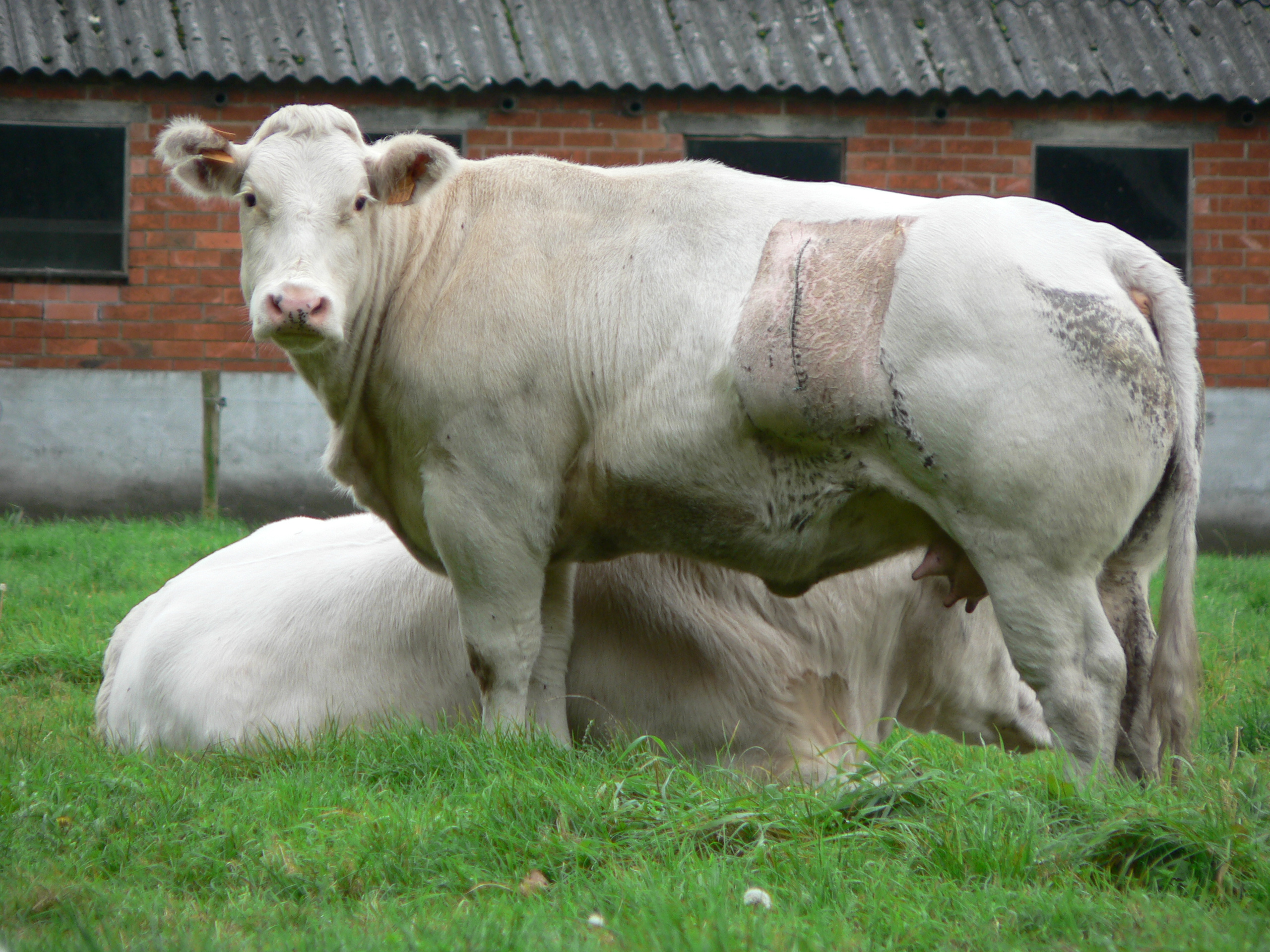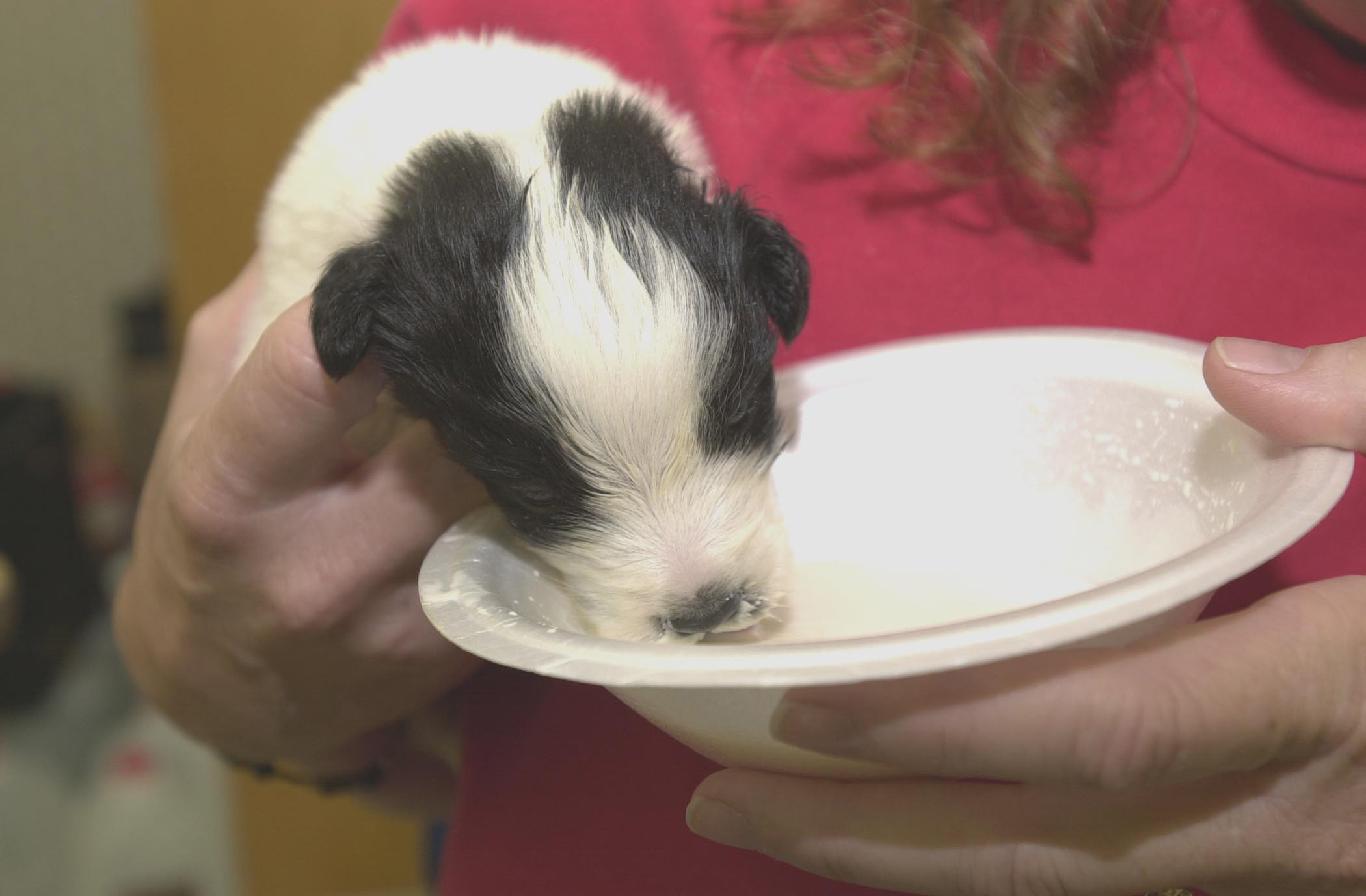|
Animal Disenhancement
Animal disenhancement (or diminishment) is the practice of selectively breeding or genetically engineering animals to reduce their capacities. It is also to fit in their environment better or to reduce animals’ natural capabilities. This term was coined and popularized by Paul B. Thompson. A prominent example is breeding genetically blind chickens, which tend to peck their peers less than sighted chickens. A strain of chickens without eyesight were accidentally bred and they were not as stressed in large groups as those with eyesight. Normal chickens were aggressive and pecked their peers but these blind chickens were less aggressive and did not harm each other as much. Animal ethicists have argued that farming diminished animals is morally preferable to farming present-day breeds if their lives contain less suffering. However, they have disagreed as to whether diminished animals' lives do contain less suffering. Animal disenhancement can be seen as a spectrum, at the end of whic ... [...More Info...] [...Related Items...] OR: [Wikipedia] [Google] [Baidu] |
Selective Breeding
Selective breeding (also called artificial selection) is the process by which humans use animal breeding and plant breeding to selectively develop particular phenotypic traits (characteristics) by choosing which typically animal or plant males and females will sexually reproduce and have offspring together. Domesticated animals are known as breeds, normally bred by a professional breeder, while domesticated plants are known as varieties, cultigens, cultivars, or breeds. Two purebred animals of different breeds produce a crossbreed, and crossbred plants are called hybrids. Flowers, vegetables and fruit-trees may be bred by amateurs and commercial or non-commercial professionals: major crops are usually the provenance of the professionals. In animal breeding, techniques such as inbreeding, linebreeding, and outcrossing are utilized. In plant breeding, similar methods are used. Charles Darwin discussed how selective breeding had been successful in producing change over ... [...More Info...] [...Related Items...] OR: [Wikipedia] [Google] [Baidu] |
Genetic Engineering
Genetic engineering, also called genetic modification or genetic manipulation, is the modification and manipulation of an organism's genes using technology. It is a set of technologies used to change the genetic makeup of cells, including the transfer of genes within and across species boundaries to produce improved or novel organisms. New DNA is obtained by either isolating and copying the genetic material of interest using recombinant DNA methods or by artificially synthesising the DNA. A construct is usually created and used to insert this DNA into the host organism. The first recombinant DNA molecule was made by Paul Berg in 1972 by combining DNA from the monkey virus SV40 with the lambda virus. As well as inserting genes, the process can be used to remove, or " knock out", genes. The new DNA can be inserted randomly, or targeted to a specific part of the genome. An organism that is generated through genetic engineering is considered to be genetically modified ( ... [...More Info...] [...Related Items...] OR: [Wikipedia] [Google] [Baidu] |
Chicken
The chicken (''Gallus gallus domesticus'') is a domestication, domesticated junglefowl species, with attributes of wild species such as the grey junglefowl, grey and the Ceylon junglefowl that are originally from Southeastern Asia. Rooster or cock is a term for an adult male bird, and a younger male may be called a cockerel. A male that has been castrated is a capon. An adult female bird is called a hen and a sexually immature female is called a pullet. Humans now keep chickens primarily as a source of food (consuming both their Chicken as food, meat and egg as food, eggs) and as pets. Traditionally they were also bred for cockfighting, which is still practiced in some places. Chickens are one of the most common and widespread domestic animals, with a total population of 23.7 billion , up from more than 19 billion in 2011. There are more chickens in the world than any other bird. There are numerous cultural references to chickens – in myth, folklore and religion, and in la ... [...More Info...] [...Related Items...] OR: [Wikipedia] [Google] [Baidu] |
Breed
A breed is a specific group of domestic animals having homogeneous appearance ( phenotype), homogeneous behavior, and/or other characteristics that distinguish it from other organisms of the same species. In literature, there exist several slightly deviating definitions. Breeds are formed through genetic isolation and either natural adaptation In biology, adaptation has three related meanings. Firstly, it is the dynamic evolutionary process of natural selection that fits organisms to their environment, enhancing their evolutionary fitness. Secondly, it is a state reached by the ... to the environment or selective breeding, or a combination of the two. Despite the centrality of the idea of "breeds" to animal husbandry and agriculture, no single, scientifically accepted definition of the term exists. A breed is therefore not an objective or biologically verifiable classification but is instead a term of art amongst groups of breeders who share a consensus around what qua ... [...More Info...] [...Related Items...] OR: [Wikipedia] [Google] [Baidu] |
Sentience
Sentience is the capacity to experience feelings and sensations. The word was first coined by philosophers in the 1630s for the concept of an ability to feel, derived from Latin '' sentientem'' (a feeling), to distinguish it from the ability to think (''reason''). In modern Western philosophy, sentience is the ability to experience sensations. In different Asian religions, the word 'sentience' has been used to translate a variety of concepts. In science fiction, the word "sentience" is sometimes used interchangeably with " sapience", " self-awareness", or "consciousness". Some writers differentiate between the mere ability to perceive sensations, such as light or pain, and the ability to perceive emotions, such as fear or grief. The subjective awareness of experiences by a conscious individual are known as qualia in Western philosophy. Philosophy and sentience In philosophy, different authors draw different distinctions between ''consciousness'' and sentience. According to ... [...More Info...] [...Related Items...] OR: [Wikipedia] [Google] [Baidu] |
Human Enhancement
Human enhancement (HE) can be described as the natural, artificial, or technological alteration of the human body in order to enhance physical or mental capabilities. Technologies Existing technologies Three forms of human enhancement currently exist: reproductive, physical, and mental. Reproductive enhancements include embryo selection by preimplantation genetic diagnosis, cytoplasmictransfer, and in vitro-generated gametes. Physical enhancements include cosmetics (plastic surgery & orthodontics), Drug-induced (doping & performance-enhancing drugs), functional (prosthetics & powered exoskeletons), Medical (implants (e.g. pacemaker) & organ replacements ( e.g. bionic lenses)), and strength training (weights (e.g. barbells) & dietary supplement)). Examples of mental enhancements are nootropics, neurostimulation, and supplements that improve mental functions. Computers, mobile phones, and Internet can also be used to enhance cognitive efficiency. Notable efforts in human augme ... [...More Info...] [...Related Items...] OR: [Wikipedia] [Google] [Baidu] |
Biomedicine
Biomedicine (also referred to as Western medicine, mainstream medicine or conventional medicine)Biomedicine " NCI Dictionary of Cancer Medicine. . is a branch of medical science that applies biological and physiological principles to . Biomedicine stresses standardized, evidence-based treatment validated through biological research, with treatment administered via formally trained doctors, nurses, and other ... [...More Info...] [...Related Items...] OR: [Wikipedia] [Google] [Baidu] |
Peter Singer
Peter Albert David Singer (born 6 July 1946) is an Australian moral philosopher, currently the Ira W. DeCamp Professor of Bioethics at Princeton University. He specialises in applied ethics and approaches ethical issues from a secular, utilitarian perspective. He is known in particular for his book '' Animal Liberation'' (1975), in which he argues in favour of veganism, and his essay " Famine, Affluence, and Morality", in which he argues in favour of donating to help the global poor. For most of his career, he was a preference utilitarian, but he stated in ''The Point of View of the Universe'' (2014), coauthored with Katarzyna de Lazari-Radek, that he had become a hedonistic utilitarian. On two occasions, Singer served as chair of the philosophy department at Monash University, where he founded its Centre for Human Bioethics. In 1996 he stood unsuccessfully as a Greens candidate for the Australian Senate. In 2004 Singer was recognised as the Australian Humanist of ... [...More Info...] [...Related Items...] OR: [Wikipedia] [Google] [Baidu] |
Animal Liberation (book)
''Animal Liberation: A New Ethics for Our Treatment of Animals'' is a 1975 book by Australian philosopher Peter Singer. It is widely considered within the animal liberation movement to be the founding philosophical statement of its ideas. Singer himself rejected the use of the theoretical framework of rights when it comes to human and nonhuman animals. Following Jeremy Bentham, Singer argued that the interests of animals should be considered because of their ability to experience suffering and that the idea of rights was not necessary in order to consider them. He popularized the term " speciesism" in the book, which had been coined by Richard D. Ryder to describe the exploitative treatment of animals. Summary Singer's central argument is an expansion of the utilitarian idea that "the greatest good" is the only measure of good or ethical behavior. He argues that there is no reason not to apply this principle to other animals. Although Singer rejects 'rights' as a moral concep ... [...More Info...] [...Related Items...] OR: [Wikipedia] [Google] [Baidu] |
Vegetarianism
Vegetarianism is the practice of abstaining from the consumption of meat ( red meat, poultry, seafood, insects, and the flesh of any other animal). It may also include abstaining from eating all by-products of animal slaughter. Vegetarianism may be adopted for various reasons. Many people object to eating meat out of respect for sentient animal life. Such ethical motivations have been codified under various religious beliefs as well as animal rights advocacy. Other motivations for vegetarianism are health-related, political, environmental, cultural, aesthetic, economic, taste-related, or relate to other personal preferences. There are many variations of the vegetarian diet: an ovo-lacto vegetarian diet includes both eggs and dairy products, an ovo-vegetarian diet includes eggs but not dairy products, and a lacto-vegetarian diet includes dairy products but not eggs. As the strictest of vegetarian diets, a vegan diet excludes all animal products, and can be acc ... [...More Info...] [...Related Items...] OR: [Wikipedia] [Google] [Baidu] |
Animal Welfare
Animal welfare is the well-being of non-human animals. Formal standards of animal welfare vary between contexts, but are debated mostly by animal welfare groups, legislators, and academics. Animal welfare science uses measures such as longevity, disease, immunosuppression, behavior, physiology, and reproduction, although there is debate about which of these best indicate animal welfare. Respect for animal welfare is often based on the belief that nonhuman animals are sentient and that consideration should be given to their well-being or suffering, especially when they are under the care of humans. These concerns can include how animals are slaughtered for food, how they are used in scientific research, how they are kept (as pets, in zoos, farms, circuses, etc.), and how human activities affect the welfare and survival of wild species. There are two forms of criticism of the concept of animal welfare, coming from diametrically opposite positions. One view, held by some th ... [...More Info...] [...Related Items...] OR: [Wikipedia] [Google] [Baidu] |
Cellular Agriculture
Cellular agriculture focuses on the production of agricultural products from cell cultures using a combination of biotechnology, tissue engineering, molecular biology, and synthetic biology to create and design new methods of producing proteins, fats, and tissues that would otherwise come from traditional agriculture. Most of the industry is focused on animal products such as meat, milk, and eggs, produced in cell culture rather than raising and slaughtering farmed livestock which is associated with substantial global problems of detrimental environmental impacts (e.g. of meat production), animal welfare, food security and human health. Cellular agriculture is field of the biobased economy. The most well known cellular agriculture concept is cultured meat. History Although cellular agriculture is a nascent scientific discipline, cellular agriculture products were first commercialized in the early 20th century with insulin and rennet. On March 24, 1990, the FDA approved a ba ... [...More Info...] [...Related Items...] OR: [Wikipedia] [Google] [Baidu] |







